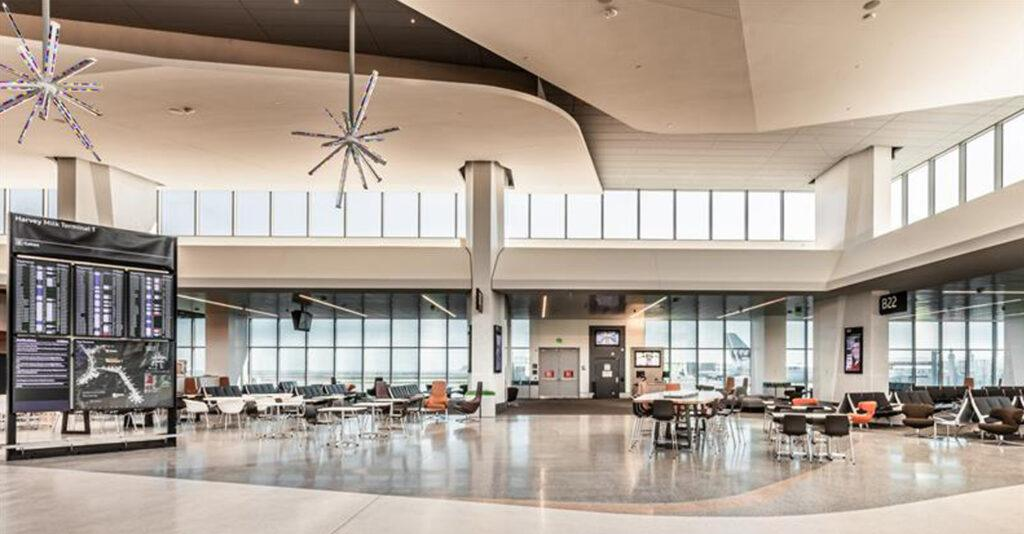ARTICLE
Progressive Design-Build Fundamentals

A Design-Builder Selected on qualifications Rather than price
This is the first in a series of articles that will discuss progressive design-build and the unique considerations it raises for owners/developers, design-builders, contractors, and design professionals.
Progressive Design-Build (PDB) is an emerging delivery method that combines the best aspects of the design-build and construction management (CM) at-risk models. It differs from traditional design-build in that the design-build team is picked through a request for qualifications early in the project planning stage before the scope of the project has been defined. The team then collaborates with the owner through all stages of design, from programming all the way through the preparation of construction documents. While all design-build projects are “progressive” to some degree, what sets PDB apart is that the owner’s selection of the design-builder is based more on qualifications than cost and occurs earlier than in traditional design-build.
Typical Progressive Design-Build Timeline
As with the CM at-risk model, PDB includes a robust preconstruction effort, and, as the design progresses, the project team establishes a Guaranteed Maximum Price (GMP) based upon an agreed level of completion of the construction documents. Compared with the traditional design-build model, in which the scope of work already may be largely defined at the start of the project (often based upon programming and design prepared by a separate architect retained by the owner), the early and ongoing collaboration among the owner and the design and construction team in PDB can enhance scope and cost certainty and reduce the potential for change orders and disputes.
PDB projects typically are divided into two phases. Phase 1 includes programming, budget and design development, preconstruction services, and development of a GMP. Phase 2 includes design completion, construction, and construction administration. The parties will need to agree on the contract format. It can be a single integrated agreement that covers both phases or separate agreements for each phase (although the parties should agree on the format for the Phase 2 agreement as early as possible).

PDB is attractive because the owner, design-builder, and architect each maintains a high level of involvement throughout the project, with regular opportunities to provide feedback and adjust the scope and design. This collaborative approach allows for greater flexibility and collaboration than traditional design-bid-build, CM, or design-build delivery methods. However, owners, contractors, and design professionals considering PDB should keep the following in mind:
- PDB requires an active and engaged owner. Throughout the project, the owner is involved in the decision-making process and works closely with the design-builder. The owner must have personnel who have the time and ability to engage in that process meaningfully.
- PDB requires not only that each party is willing and able to fulfill a very active ongoing role, but that each party adopt a collaborative mindset and shed old behaviors. PDB will not work if each party falls back on the behaviors they might use under traditional project delivery methods.
- Things do not always go as planned and it is possible that the owner and the design-builder will not be able to agree on a GMP. The contract should address what will happen in such an event. The owner will want to include an “off-ramp” that will allow it to use the construction documents for the construction and completion of the project. The design-build team likewise will need to address this in its scope of services and in the agreement between the design-builder and architect.
- Build a strong team: PDB projects require a high degree of collaboration, so it is important to assemble a team with the right experience, expertise, and mindset to ensure success.
- Define the scope of work: Clearly defining the project requirements and scope will help avoid changes and associated cost increases later in the project. Close coordination throughout the design phase can reduce the opportunities for scope creep.
- Establish clear communication channels: Regular communication and collaboration between the owner and the design-build team are critical for project success. Design charettes, regular team meetings, and accurate/timely meeting minutes and reports will help keep everyone on the same page.
- Ensure quality control: The design-build team should establish quality control processes throughout the project to reflect the agreed design and scope and ensure that design changes do not negatively impact construction quality, costs, or schedule. Proactive design management by the design-builder is crucial.
PDB can create an ideal environment for the owner, design-builder, and architect to succeed. With the early involvement of the design-builder and architect, the owner enjoys more control over scope, quality, cost, and schedule. The expanded collaboration and communication inherent in PDB also benefit the design-builder and architect by reducing opportunities for disputes and claims. However, to be successful, all parties must recognize that PDB takes a different set of skills and requires a different level of commitment than traditional design-build.
Greyling’s consulting and insurance professionals can advise owners/developers, design-builders, contractors, and design professionals on project risks and risk mitigation strategies for progressive design-build projects, including tools to assist clients with go/no-go decisions, best practices, teaming, prequalification, and benchmarking for professional liability limits for design-build and design assist subcontractors. When it is time to insure a project, our insurance team can explain how progressive design-build fits in with clients’ existing insurance policies and can offer the best value for project-specific coverages, including commercial general liability, professional liability, builder’s risk, and Contractor’s Protective Professional Indemnity.
AUTHOR

TREY MOYE, JD
Trey’s legal career was dedicated exclusively to the construction and design industry and he represented owners, developers, contractors, and design professionals involved in significant projects around the world. He also represented clients in prosecuting and defending claims in litigation and alternative dispute resolution, including matters in Europe, the Middle East, Asia, Latin America, and the Caribbean.
He has been involved in almost every kind of project, including aviation, transportation, power, industrial, manufacturing, oil and gas, mining, healthcare, life sciences, pulp and paper, data centers, commercial, hospitality, sports and entertainment, distribution, warehousing, and education. His experience includes every form of project delivery and he has led legal teams on significant design-build, PPP, EPC, and IPD projects. Trey brings this broad perspective and experience to his work with Greyling clients to address the full range of contract negotiation and drafting, insurance and bonding, contract administration, subcontracting and procurement, environmental, and claim and dispute issues that can arise.
On a daily basis, Trey assists clients in managing risk and developing and implementing best practices. With his substantial experience in structuring construction transactions, he regularly advises clients on contract terms and risks and ensures that our clients’ insurance programs effectively address those risks. He is a believer in proactive solutions and helps clients assess risks and develop policies, practices, and training not only to manage and mitigate risk but to enhance project performance.